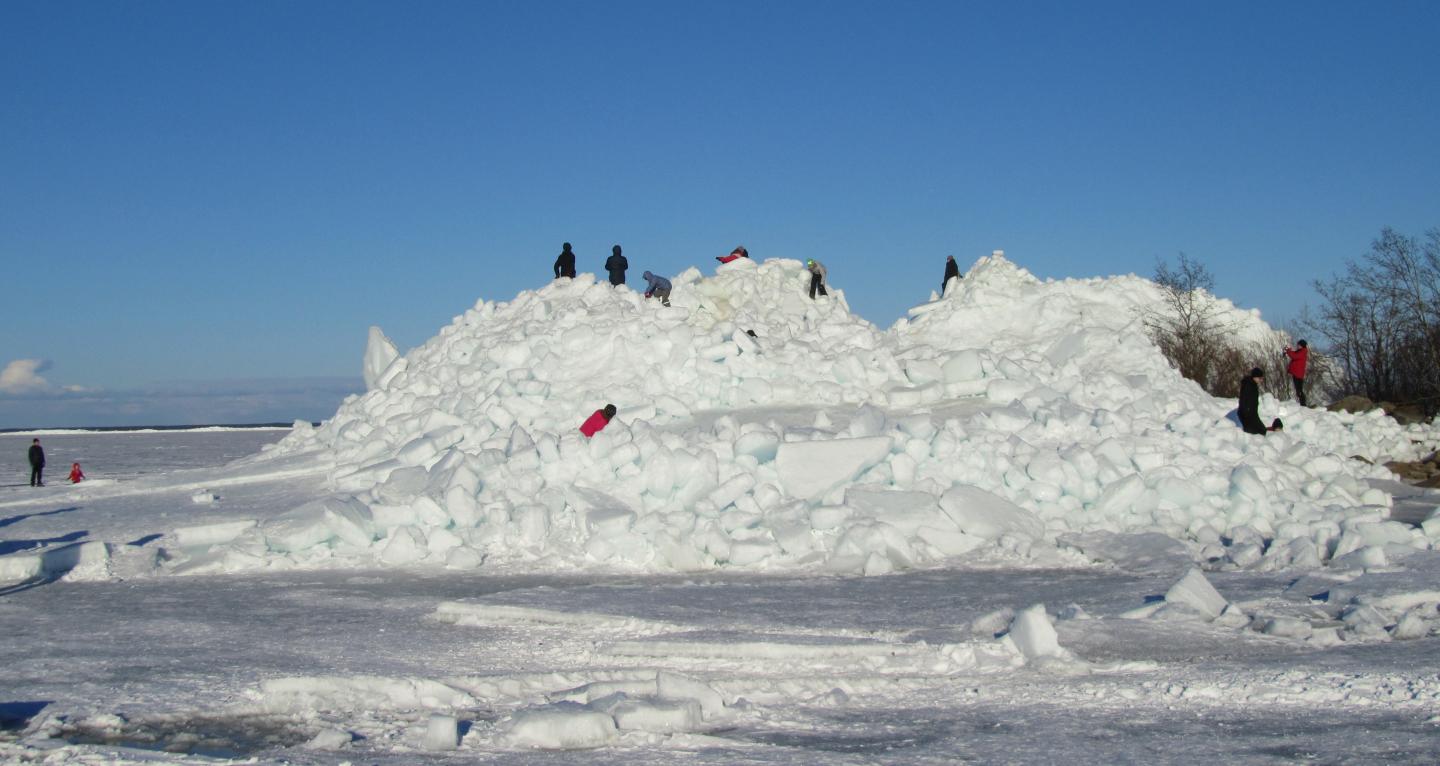To face the challenges of a warming climate, a new technique determines the long-term effects of moving Arctic ice on bridges or wind turbines

Credit: Janne Ranta/Aalto University
Conditions in Arctic waters are among the most extreme in the world. Strong winds and currents powerfully push ice across vast distances, resulting in large ridges reaching tens of metres in height. At the same time, global warming and increased human presence have added new pressures in these northern environments. Yet the mechanisms behind the effects of ice on physical structures — particularly over the long term — have remained an open question in a time of continuous environmental change.
Researchers at Aalto University have developed a new method of assessing how ever-moving, heavy loads of ice affect structures like bridges or even wind turbines across a wide variety of conditions.
‘Rubbling is the process of how ice — moved by winds and currents — breaks against marine structures and how it impacts these structures,’ explains Jukka Tuhkuri, a leading ice researcher and professor at Aalto University. ‘The process is extremely sensitive to initial conditions, chaotic even, which makes systematic analysis in the field incredibly challenging.’
To foresee a wealth of scenarios and effects over the very long term, the Aalto-based team is making use of numerical experiments — advanced computer simulations that draw on knowledge gained from the field — to see the effects of micro-level changes to known elements of rubbling.
‘With this method, we can really see what’s happening since we have full control of the factors involved. With real sea ice, we just don’t have that possibility,’ says Assistant Professor Arttu Polojärvi.
The precise simulations have allowed researchers to learn about the mechanics behind the process in a way never before possible.
‘By constantly running simulations, we’ve learned that the thickness of ice is by far the most important thing when it comes to how ice loads impact structures. Compressive strength comes second but we can almost forget about everything else, contrary to conventional thinking in the field,’ says Tuhkuri.
The method also helps address the main challenge of an ever-changing climate: foreseeing future conditions. Global warming means Arctic ice is getting thinner, storms are becoming more severe and more ice is moving. At the same time, overall conditions are easing in these regions; industry and tourism are picking up, which carries risks for both humans and the environment.
‘We can’t estimate the future with the field data available today. Strong, thick ice stays where it is, but even small storms can carry thin ice,’ says Polojärvi. ‘We need to be able to estimate 100- or even 500-year ice loads on permanent structures so we can ensure they are safe and last, while also minimising the materials used to make them as sustainable as possible.’
The team will present their work on Friday 7 June 2019 at a week-long gathering of leading ice researchers, the IUTAM symposium on physics and mechanics of sea ice, held at Aalto University in Greater Helsinki, Finland.
Questions and Answers
Q: Have numerical experiments been used before to study ice loads?
A: This research marks the first time that numerical experiments have been used to conduct statistical analysis of ice loads, providing estimates of future wear and tear on physical structures over the very long term. In the past, researchers have studied ice rubbling ? that is how ice pushed by winds and currents breaks against marine structures and how it impacts the structures ? in various ways: experimentally in laboratories, experimentally by observing full-scale events, by developing theoretical models, and using different numerical tools.
Q: Can the method really predict how ice will behave as the climate heats up — even centuries ahead?
A: Yes, if colleagues in geophysics can predict how ice gets thinner and weaker with global warming, we can predict how the ice loads change. This is because the new model is based on fundamental physical relations and, thus, we can change the thickness in the model and see what happens. Other models may not be as detailed.
Q: What risks do ice loads carry to humans and the environment?
A: Marine structures can break and cause accidents. If humans are working on a platform that fails, the consequences can be serious. Structural failures can also be very expensive and lead to environmental risks due to potential leaks in fuel tanks and fuel pipes, etc.
###
Media Contact
Jukka Tuhkuri
[email protected]



